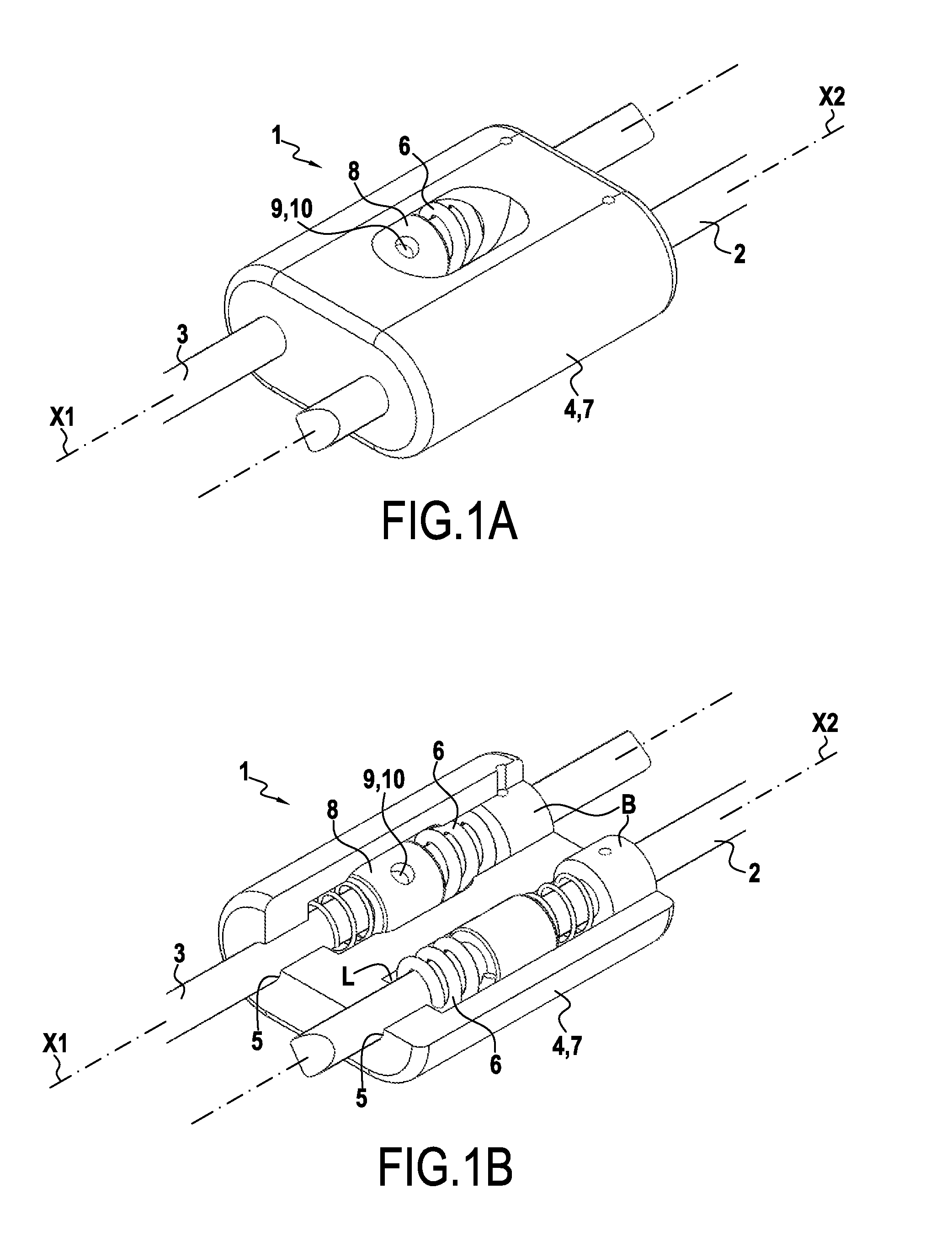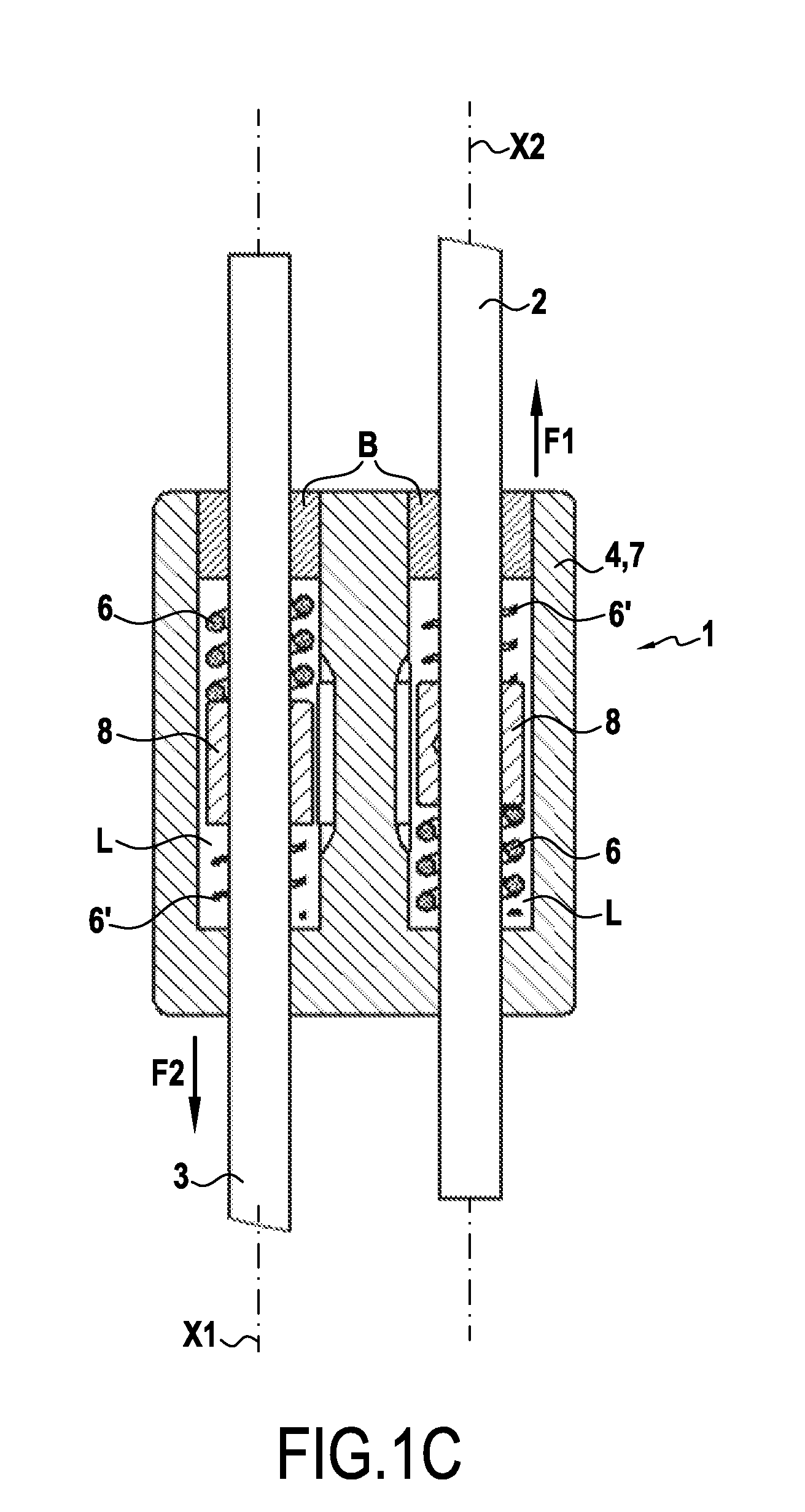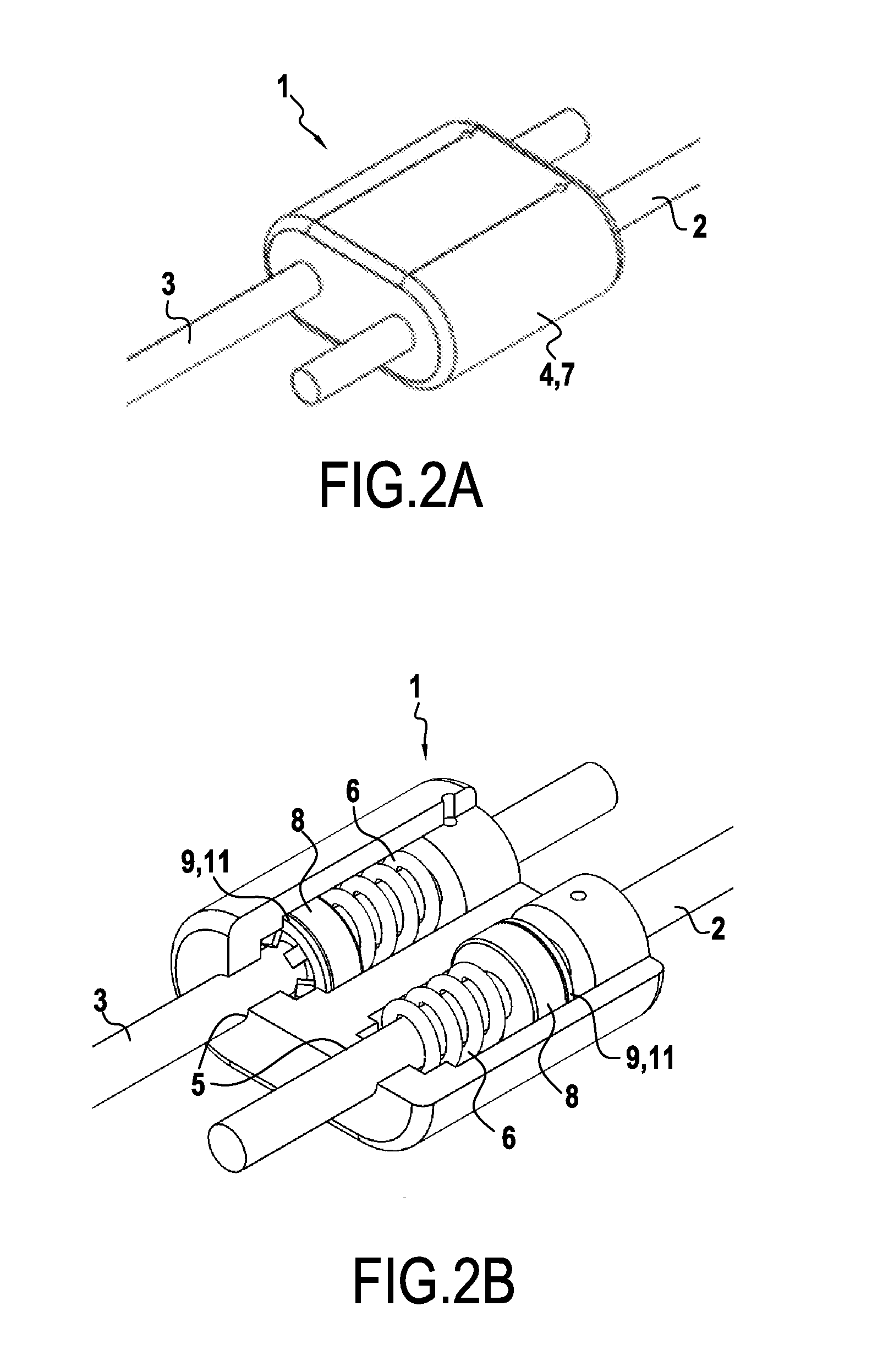Device for correcting scoliosis and controlling vertebral arthrodesis
a technology for scoliosis and vertebrae, applied in the field of correcting scoliosis, can solve the problems of affecting the function of the vertebrae, and preventing the growth of the operated area,
- Summary
- Abstract
- Description
- Claims
- Application Information
AI Technical Summary
Benefits of technology
Problems solved by technology
Method used
Image
Examples
first embodiment
[0059]In a first embodiment shown in FIGS. 1A to 10, the correction device 1 comprises a casing 7 in which each of the two distraction rods 2, 3 of the correction device 1 is inserted along its own axis X1, X2, these two axes X1, X2 being parallel.
[0060]The casing 7 has a block-like, substantially parallelepipedal shape, in which two insertion and guiding channels 5 are formed for the distraction rods 2, 3 to slide therein. These two channels 5 are parallel and they both open out in the longitudinal direction of the casing 7, i.e. parallel to the distraction rods 2, 3.
[0061]Inside the casing 7, two cylindrical housings L are formed that are coaxial with the channels 5 for guiding the distraction rods 2, 3. Each housing L is for receiving and accommodating a suspension element 6 of the corresponding distraction rod 2, 3 and a structure for cushioning and locking the rod, here comprising a ring 8 for adjusting the travel of the distraction rod 2, 3 in the casing 7.
[0062]The housings L...
fourth embodiment
[0084]the correction device 1 of the invention, which is structurally analogous to the three embodiments described above, is presented in FIGS. 4A and 4B.
[0085]In this embodiment, the scoliosis correction device 1 comprises a linking member 4 formed by a casing 7 with a rectangular section in a plane containing the axes X1, X2 extending the distraction rods 2, 3 each inserted into apertures or channels formed along these parallel axes X1, X2 in two opposite walls of the of the casing 7. A rectangular housing is formed inside the casing 7. In this housing, the distraction rods 2, 3 extend along the axes X1, X2. Each of the rods 2, 3 cooperates with a cushioning and locking structure, here comprising a ring 8 and a suspension spring 6 threaded onto each distraction rod 2, 3. Inside the housing, the ring 8 and the spring 6 carried by the rod 2 are threaded onto it in a position that is reversed relative to the ring 8 and the spring 6 on the rod 3.
[0086]In this particular embodiment, ea...
PUM
 Login to View More
Login to View More Abstract
Description
Claims
Application Information
 Login to View More
Login to View More - R&D
- Intellectual Property
- Life Sciences
- Materials
- Tech Scout
- Unparalleled Data Quality
- Higher Quality Content
- 60% Fewer Hallucinations
Browse by: Latest US Patents, China's latest patents, Technical Efficacy Thesaurus, Application Domain, Technology Topic, Popular Technical Reports.
© 2025 PatSnap. All rights reserved.Legal|Privacy policy|Modern Slavery Act Transparency Statement|Sitemap|About US| Contact US: help@patsnap.com



